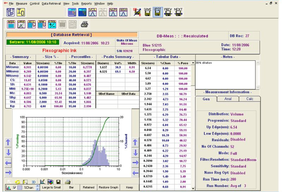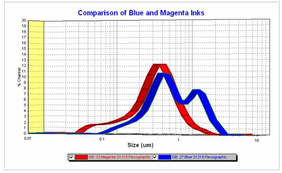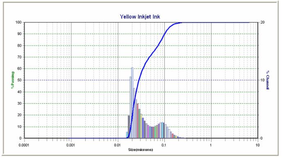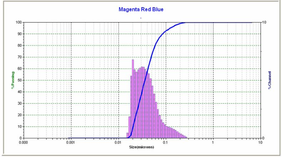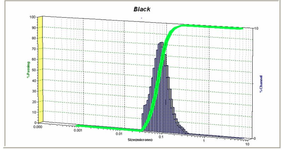General
Printing and writing have involved the use of color or black materials contained in various vehicles since the time of cavemen. The first pigment believed to be used was probably lampblack dating back as long as 4000 -5000 years. Modern printing inks contain many components each having a specific purpose in maintaining color, intensity, dispersion, viscosity, as well as acting as a milling aid. The table below shows the general type of chemical and its application. These materials impart specific properties to the ink to allow for design considerations of printers and final use.
Material | Purpose |
Buffers | Control of acidity and pH |
Humectants | Avoid too rapid drying |
Polymers | Binding to substrate |
Defoamers | Eliminates bubbles which cause interruption of ink flow from a printer –head tip |
Wetting Agents | Dispersion, reduction of surface tension |
Biocides | Biological stability |
Thickeners | Viscosity |
Dispersants | Maintenance of separated particles |
Clays | Filler |
Approximately 50% of the cost of inkjet ink is due to the coloring agent. The colorant can be of two types: pigment or dye. Dyes are very small molecules usually considered to be in complete solution. Molecules smaller than 1 nm are considered to be in solution while those larger than 1nm are considered to be in suspension. Pigments are used and are considered to be in suspension (not solution) and may be either organic or inorganic in chemical composition. The type of black pigment used in the past was spinel, rutile or iron. These have been substituted mostly by carbon black.
The ink is developed by mixing the components in a primary blender. Milling or grinding is performed after the more gentle blending operation and includes addition of one or more components. Addition of surfactant reduces surface tension to allow mixing of all the components in water. Along with dispersants, surfactants also assist in maintaining dispersion during the subsequent step of ball or roller mixing. Dispersants may also to be used to lower the mechanical energy required for grinding. Polymers such as polyacrylates, polyurethanes and polyesters are used to obtain the best “blocking” characteristics of adherence to a substrate. It is necessary to be careful with balancing the relative quantities of surfactants and polymers since they may interact which would reduce their effectiveness in maintaining suspension applicability and color strength.
The purpose of all the components is to finally provide a colloidal suspension of crystals or particles which scatter light according to the characteristics of the pigment and other materials present. The resulting light scattering affects light fastness,shade and intensity of color. Modern advances in electronics and paper coatings allowed the development of color printers in the early 1980s. Of these printers probably the most popular is inkjet technology. The ink for these printers has the same general composition but small particle size and low viscosity are necessary to pass through the small nozzle of the print head. There are three types of technology used for transfer of the ink: Drop on demand, Continuous Ink Jet and Piezo Ink Jet DOD. These vary depending upon printer manufacture.
Application of NANO-flex® to Measuring Inks
NANO-flex® provides an exceptional avenue to provide Dynamic Light Scattering data. Use of the Power Spectrum analysis concept provides high repeatability and advanced analysis while the probe technology permits measurement at high particle concentrations.
Sample is placed in a beaker or other suitable container. NANO-flex® FLEX software is initiated and a background measurement is performed using water or other clean fluid matrix. The choice of fluid is dependent upon the base fluid and truly-soluble components. The probe is transferred to the waiting sample and the measurement is started. Background measuring time is set at 15-30 seconds while measuring time is set to 30-60 seconds.
Dynamic Light scattering is governed by certain basic concepts as described in the Stokes-Einstein Theory. Accordingly, the viscosity of the clean, suspending fluid is required. Contrary to some promoters of DLS instruments the viscosity of the suspension is not needed and a viscometer is not required to make viscosity measurements of individual samples. Data are shown below for a variety of inkjet and flexographic inks.
Example Results
The first figure shows a typical printout for blue colored flexographic ink where NANO-flex® is used as a quality control measure. The image is that shown on the monitor following measurement of the ink. Note the presence of the bimodal distribution. The mode at the larger sizes was verified by optical (light ) microscopy as was the well-dispersed state. The sample was measured using a 3:1 dilution.
In the second figure, a comparison is provided for FLEXOGRAPHIC blue ink with magenta. The comparative graph was developed using Particle Metrix FLEX software which allows direct copying into PowerPoint. The magenta sample does not show the presence of a second distribution mode by either NANO-flex® or microscopy.
